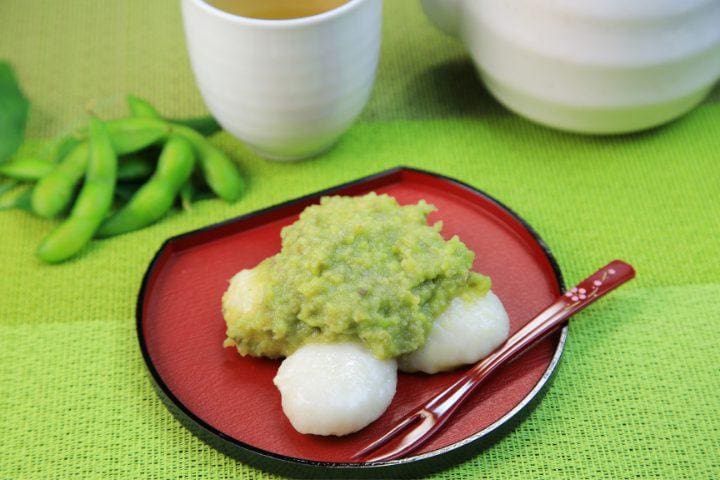
From edamame to soy sauce, some of Japan’s most well-known foods are made from soybeans. These dishes, like much of Japanese cuisine, are often savoury and full of umami flavour. However, soybeans are also used often in Japanese desserts and sweets as well.
Background of Soybeans in Japan
From edamame to soy sauce, some of Japan’s most well-known foods are made from soybeans. These dishes, like much of Japanese cuisine, are often savoury and full of umami flavour. However, soybeans are also used often in Japanese desserts and sweets as well.
But what were they used for? The first mention of soy-based foods is seen in 701 in The Taihō Ritsuryō [Taiho Law Codes], by Emperor Monmu, which mentioned fermented foods such as fermented black beans and misho, an earlier version of today’s miso.
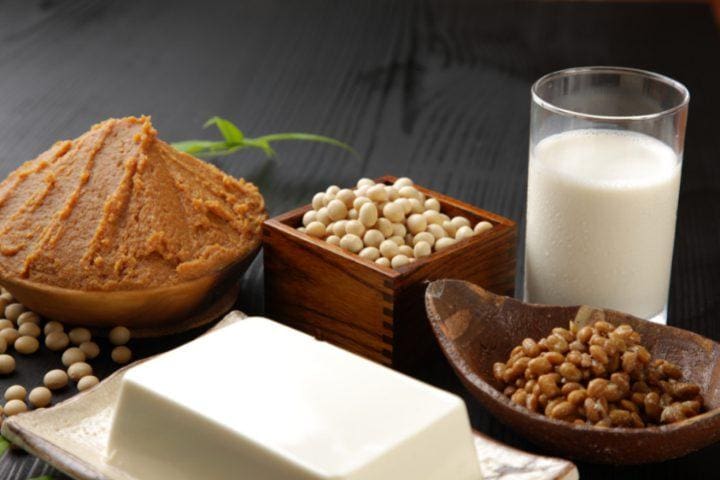

Buddhism helped to popularise soy foods in Japan in the 700s as emperors prohibited animal killing and meat-eating and soy products became a main source of protein. They then officially became an important crop from the 900s. Other foods, like everyone’s beloved natto, were later created (likely from the early 1000s) and tofu was first mentioned in the text in the year 1183. Kinako, the modern Japanese word for roasted whole soy flour first appeared in text in 1587.
The first soy sauce was exported from Nagasaki in 1647. As Japan had more contact with other countries/territories in later years, soy and soy-related foods were common words these visitors would learn. Writers would report on soyfoods in Japan in their native language, and the words “soy,” “soya” and “soja,” and the term “soy sauce” came into English from the Japanese word shōyu via the Dutch.
Before World War II many households cultivated their own soybeans, and farms planted them in between fields. Nowadays, however, the majority of soybeans are actually imported from the U.S.
Health Benefits
Soybeans are high in protein, fibre, easy to digest, and can be naturally hydrating due to high water content, heart-healthy, vitamins and minerals, which may reduce the risk of cancer. They may also help you live longer! Well, I can’t guarantee that but Japanese people are the largest consumers of soybeans, and Okinawans, famous for their longevity, top the list at about 60 to 120 grams per person each day.
Popular Japanese Desserts Using Soybeans
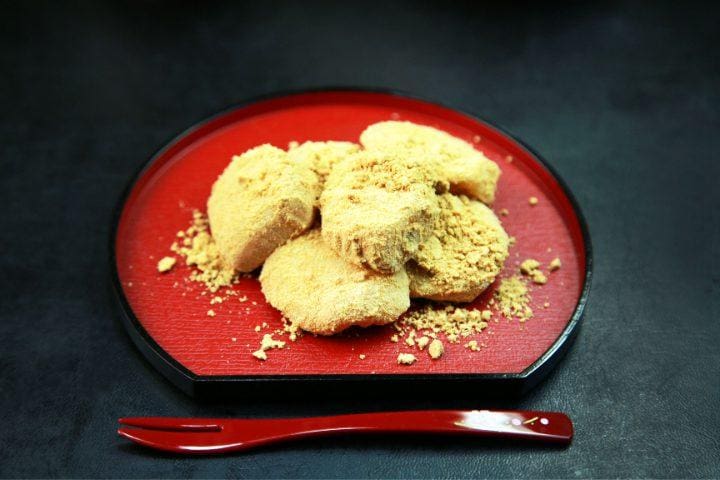

Kinako
Kinako is a roasted soybean flour, used as a topping in desserts, giving a slightly sweet, slightly nutty flavour. You will especially see it in traditional Japanese sweets such as mochi. It is considered a superfood and is rich in nutrients.
In olden times, kinako was used the way we use sugar today. Sugar didn’t arrive in Japan until the 16th century, and before this, kinako was the go-to for sweets.
Let’s look at some ways kinako is used in Japan.
Maybe the most popular way of eating kinako is sprinkled on top of mochi, a Japanese rice cake made from glutinous rice. Another variety of mochi is kuzumochi, a jelly made from Japanese arrowroot starch. The sprinkling of kinako on the kuzumochi brings through a deep nutty flavour.
Kinako Ohagi, or Botamochi are actually the same sweet. Not many Japanese people know this but they are called botamochi in the spring and ohagi in the autumn. They are made with glutinous rice and coated with anko bean paste, or rolled in kinako.
Other more original uses include kinako milk or lattes, sometimes sweetened with honey or maple syrup. And sprinkling kinako on yogurt or ice cream, as the kinako itself isn’t sweet it doesn’t add sweetness but a nutty depth instead.

Zunda
Zunda, made from boiled soybeans that have been harvested early, mashed and seasoned with sugar or salt. To make zunda, the young soybeans are ground into a gooey paste; it’s not smooth but it makes a versatile ingredient in desserts for its sweetness.
Zunda snacks are popular in Sendai and the Tohoku region. Zunda can be used in mochi, pudding, taiyaki (where the filling is a zunda paste instead of the traditional red bean paste), ice cream, milkshakes, and even korokke.
You can find trademarked Zunda Sayro milkshake stands throughout Sendai, and they even have one in Tokyo and Haneda Airport. The beans used in the Zunda Sayro milkshakes are specially selected and blended by a craftsman to ensure the best taste.
The Zunda Korokke (Japanese Croquettes) mix zunda paste with mashed potato to make a hearty korokke snack, slightly sweet from the zunda.
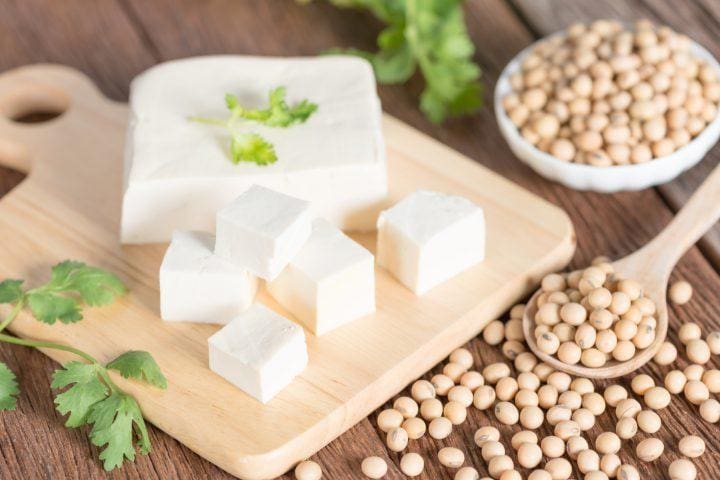

Tofu
While tofu on its own has little-to-no flavour, it’s often served in salty and savoury dishes (including fermented tofu dishes). However, it can also be made sweet too, such as in tofu pudding desserts.
Tofu originated from China (called “doufu”) and was brought back to Japan by Japanese monks studying in China. Though originally a simple source of protein, it has now been adapted to a variety of dishes including sweets.
There are 3 main types of tofu. Kinu tofu (silken tofu) is very soft and creamy and is perfect for sweets. Momen tofu is strained to remove the extra water and is, therefore, spongier and keeps its shape. Aburaage is deep-fried tofu, made by deep-frying thin slices of tofu. The type of tofu used depends on your envisioned sweets. What sweets can you make with tofu?
Tofu is used to make ice cream, pudding, mousse, cheesecake and much more! Tofu can be used in dango recipes, such as in this Hanami Dango recipe where it’s used as part of the dough.
While not sweet as such, did you know there is now fermented tofu that tastes just like cheese? Fermentation is added to the tofu making process and soy milk is added, making it 100% plant-based. With less liquid than tofu, it’s hard in texture and tastes just like cheese, with a slight creamy tofu aftertaste. Actually, for a more dessert-like creamy cheese, you can make your own with shiokoji (a natural seasoning made with koji mould).
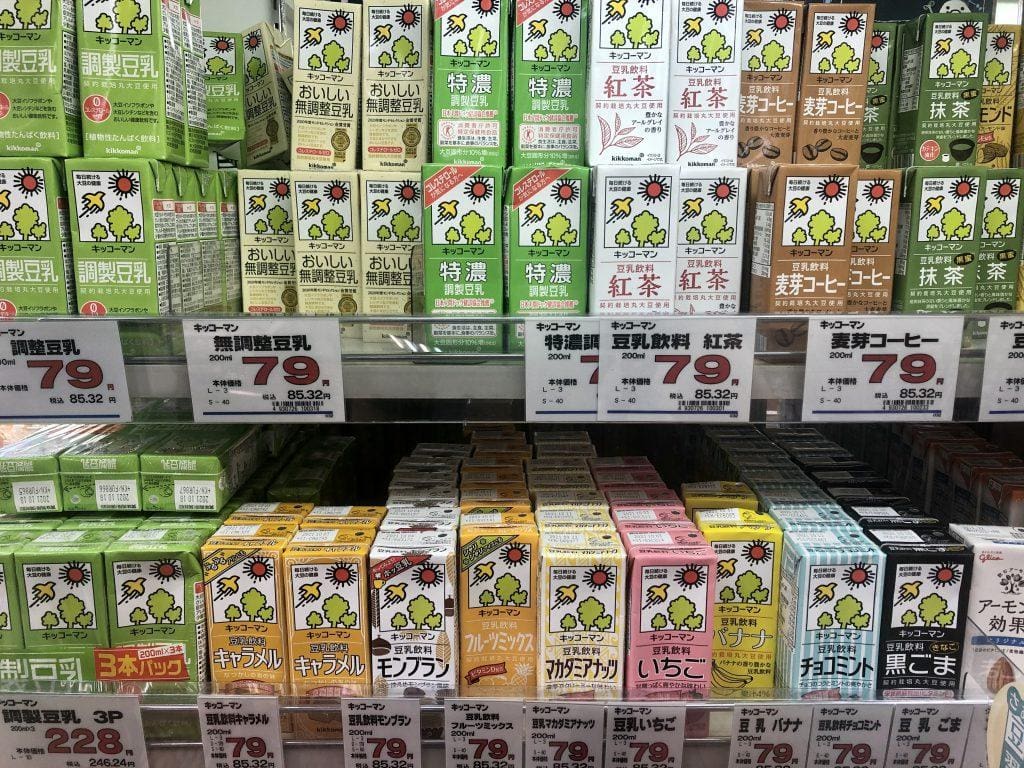

Sweet Soy Milk
In most Japanese supermarkets, there is a large variety of soy milk flavours to choose from, from mint chocolate to banana and more; these drinks are sweet and can even be frozen to make an ice cream-like dessert in the summer.
It can be found in over 50 flavours, some of which are seasonal, such as cherry blossom flavour. Many of the flavours are unique to Japanese cuisine, with flavours like black bean or amazake that aren’t usually found in Australia (or many other countries); though these flavoured soy milks aren’t exactly a traditional food item, they’re inspired by the rich food culture and interesting flavours traditional Japanese food has to offer.
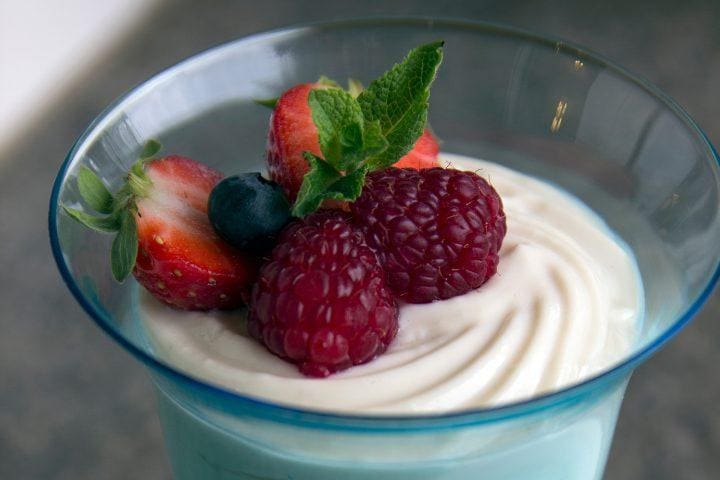

Soy and Desserts in Australia
In Australia, soy products such as tofu, are often known as an ingredient used in meat/dairy alternatives for vegetarians and vegans. Tofu is not as commonly used as in Japanese cuisine and is usually found in Asian supermarkets for a fairly high price.
But what about sweets? Like in Japan, soy is used for soy milk products (such as sweet chocolate flavour, etc.), and to make soy-based puddings and ice creams. Again, these desserts are often made as an alternative for non-dairy consumers. Desserts in Australia are very sweet (pavlova anyone?), they love chocolate (hello Tim Tams), and cakey desserts.
Soybeans: A Healthy and Delicious Ingredient in Japanese Desserts
Products made from soybeans are consumed every day by most Japanese, whether it’s tofu, soy sauce or miso. Traditional Japanese sweets are often covered with kinako, a roasted soybean flour that adds a nutty flavour to the dish. Less-traditional dishes have also become popular in recent years seeing the use of soy products like soy milk or tofu in desserts.
— Article From BACK LANE











